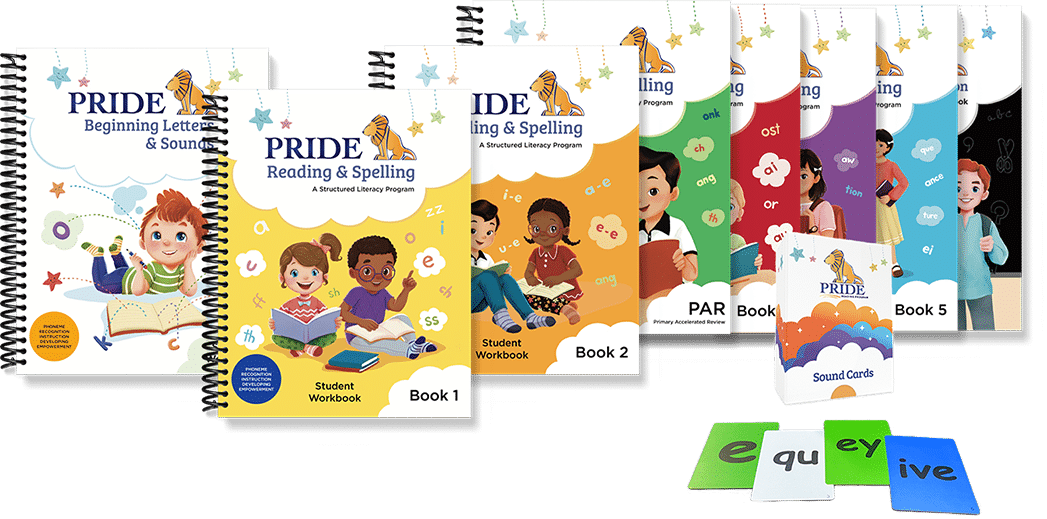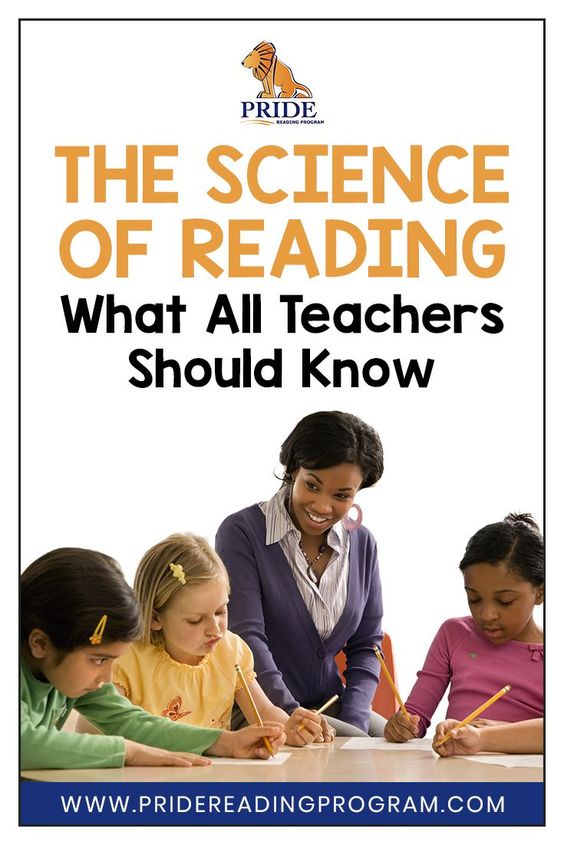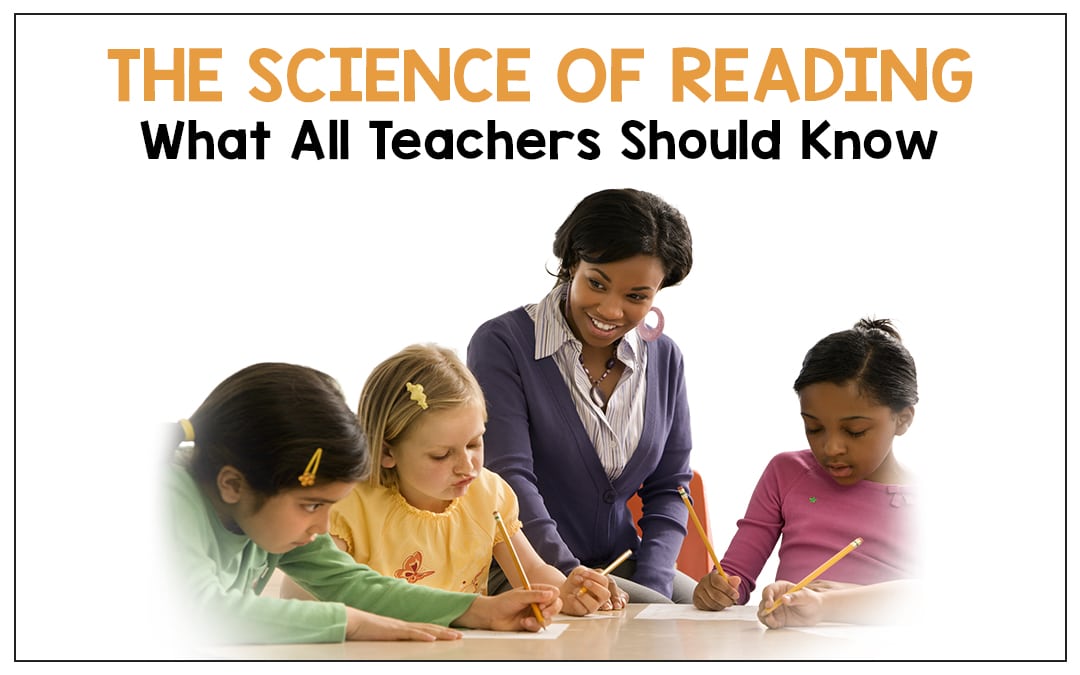What is the Science of Reading?
The Science of Reading is a term that refers to research that has been conducted over the past twenty years by leading reading experts, cognitive scientists, and reading researchers on how we learn to read.
There is an actual “science” to teaching reading. The science and research-based reading instruction should be used in every classroom. Many teachers have never heard of the Science of Reading. If teachers do not learn these scientifically proven strategies for teaching reading, many of their students will struggle with reading throughout their lives.
Free Webinar: To learn more about The Science of Reading, watch our latest webinar – What is the Science of Reading?
Why Reading is Not a Natural Process..
According to the Science of Reading
Learning to speak is a natural process for children, but learning to read is not. Reading needs to be taught explicitly. Children need to learn the different sounds in spoken language and be able to connect these sounds to written letters and make meaning out of print.
Children also need background and vocabulary knowledge so that they comprehend what they are reading. Eventually, children need to recognize words automatically and read text fluently while at the same time attending to grammar, sentence structure, and punctuation. Decades of scientific research has shown that reading does not come naturally. The human brain is not wired to read.
The Reading Brain
There are three areas of the brain that involve reading (Sandak, Mencl, Frost, & Pugh, 2004; Houde, Rossi, Lubin, & Joliot, 2010).
They are:
1. Phonological Processor:
The phonological processor is located towards the front of the brain on the left side. It handles spoken language. Almost everyone is born with this language area intact.
2. Orthographic Processor:
The orthographic processor is located toward the back of the brain on the left side. It handles visual images. Almost everyone is born with this visual part of the brain intact.
3. Phonological Assembly Region:
The phonological assembly region connects vision and speech and is the system that enables reading. No one is born with this neural system that connects both vision and speech. This system must be built through instructional experiences. (American Psychological Association, 2014; Hruby & Goswami, 2011: Shaywitz & Shaywitz, 2004; Shaywitz & Shaywitz 2008).
So…how do we build this phonological assembly region in the human brain? The Science of Reading research has shown that a child’s brain needs to first know the different sounds in spoken language and then be able to connect these sounds to written letters and then blend the sounds to make words (decoding).
The Simple View of Reading
The Simple View of Reading is a formula that demonstrates the view that reading has two basic components:
word recognition (decoding) and language comprehension
Students need both strong decoding and strong language comprehension skills to reach the ultimate goal of reading which is reading comprehension.
Decoding (D) X Language Comprehension (LC) = Reading Comprehension (RC)
Gough and Tunmer (1986) proposed the Simple View of Reading to explain the importance of decoding in reading. The Simple View formula has been supported and validated by a number of research studies, including research from Hoover and Gough (1990) and Catts, Adlof, & Weismer, 2006).
Which Reading Skills Need to be Taught.. According to the Science of Reading?
The most effective decoding (word reading) instruction is a structured and explicit phonics-based approach. This approach is beneficial to ALL students, not just those with dyslexia or reading difficulties.
The National Reading Panel (NRP) Report in 2000 identified instruction in the following five elements as the most important skills students need to become proficient readers.
1. Phonemic Awareness
Phonemic awareness is recognizing that words are composed of individual sounds that can be blended together for reading and pulled apart or segmented for spelling.
Phonemic awareness is a crucial skill for all students learning to read and there is a greater emphasis for phonemic awareness in kindergarten and first grade.
2. Phonics
Phonics is a method of teaching students how to connect the graphemes (letters) with the phonemes (sounds) and how to use this letter/sound relationship to read and spell words. Phonics is a key component of reading because decoding is the foundation upon which all reading instruction is built upon.
3. Fluency
Reading fluency is reading text with sufficient speed and accuracy to support comprehension. The practice of developing fluency in children includes reading accuracy, reading rate, and reading expression. Instruction in reading fluency should include assisting students in developing their ability to use typical speech patterns and appropriate intonation while reading aloud.
4. Vocabulary
Vocabulary is the understanding of individual word meanings in a text. Teachers should develop student’s vocabulary knowledge through direct and indirect methods of teaching and students should be exposed to vocabulary both orally and through reading.
5. Comprehension
Comprehension is the understanding of connected text and is the ultimate goal of reading.
How do you Teach Reading… According to the Science of Reading?
Instead of looking at valid evidence, many teachers rely on experience and anecdotal information to guide their reading lessons. Although experience is important, depending on experience alone will leave many children behind. To be able to provide reading instruction that helps all children succeed, teachers need a basic understanding of the science of reading.
Explicit Instruction
Learning to read does not come naturally and requires a complex set of skills that must be taught to students explicitly. The term “Explicit Instruction” means that the teacher is the one who takes center stage. The teacher controls the student’s learning by teaching the student. All concepts are directly and explicitly taught to students with continuous student-teacher interaction, guidance, and feedback.
The Science of Reading shows us that explicit or direct instruction is the most effective teaching approach for students with reading difficulties. (Arden & Vaughn, 2016; Simmons, et.al, 2008; Weiser & Mathes, 2011)
In explicit instruction, the teacher will first present a lesson with a demonstration. The teacher will then do the lesson together with the student. Finally, the teacher will ask the student to do it without guidance.
I do, we do, you do.
Phonological Awareness
Phonological awareness means that a child can recognize the sounds, rhythm, and rhyme involving spoken words.
You hear it and you speak it.
There is no print involved in phonological awareness. Phonological awareness happens way before children are introduced to letters of the alphabet. Research has proven that phonological awareness is highly related to success in reading and spelling.
Phonological awareness involves teaching children rhyming, syllable division, and phonemic awareness.
Systematic Phonics Instruction
Systematic phonics is the method of teaching students how to connect the graphemes (letters) with the phonemes (sounds) using a clear and well-thought-out scope and sequence. This includes:
- Consonant and short vowel sounds
- Digraphs and blends
- Long vowels and other vowel patterns
- Syllable patterns
- Affixes
Structured Literacy
In the structured literacy approach, students are taught phonics, decoding, and spelling skills explicitly in a systematic, sequential, and cumulative step-by-step process. Structured literacy approaches are effective at helping students with learning differences, such as dyslexia, learn to read and spell (Spear-Swerling, 2019).
Structured literacy instruction is carefully built around a scope and sequence. This scope and sequence dictate the order in which each concept or skill is taught. Each lesson builds upon itself and the student never has to read or spell anything they haven’t been introduced to yet, which is why the stories and text in structured literacy are always decodable. The students only read and spell what they have been explicitly taught.
Each individual skill is taught in isolation beginning with the most basic levels of phonics and developing into the most advanced spelling rules and morphological concepts.
More Resources on the Science of Reading
Books and Articles:
Barshay, Jill. (2020). Four things you need to know about the new reading wars. The Hechinger Report. https://hechingerreport.org/four-things-you-need-to-know-about-the-new-reading-wars/
Early Reading Instruction: What Science Really Tells Us about How to Teach Reading (The MIT Press, 2004) https://mitpress.mit.edu/books/early-reading-instruction
Hanford, Emily. (2018). At a loss for words: How a flawed idea is teaching millions of kids to be poor readers. APM Reports. https://www.apmreports.org/story/2019/08/22/whats-wrong-how-schools-teach-reading
Seidenberg, M. (2017). Language at the Speed of Sight: How We Read, Why So Many Can’t, and What Can Be Done About It. New York, N.Y: Basic Books.
Maryanne Wolf, Proust and the Squid: The Story and Science of the Reading Brain. Harper Perennial, 2008.
Websites:
National Center on Improving Literacy
International Dyslexia Association
To learn more about effective reading education, visit us at PRIDE Reading Program today! This Orton-Gillingham, structured literacy curriculum is aligned with the Science of Reading, and used by teachers and parents worldwide with great success!


Karina Richland, M.A., is the author of the PRIDE Reading Program, a multisensory Orton-Gillingham reading, writing, and comprehension curriculum that is available worldwide for parents, tutors, teachers, and homeschoolers of struggling readers. Karina has an extensive background in working with students of all ages and various learning modalities. She has spent many years researching learning differences and differentiated teaching practices. You can reach her by email at info@pridereadingprogram.com or visit the website at www.pridereadingprogram.com

